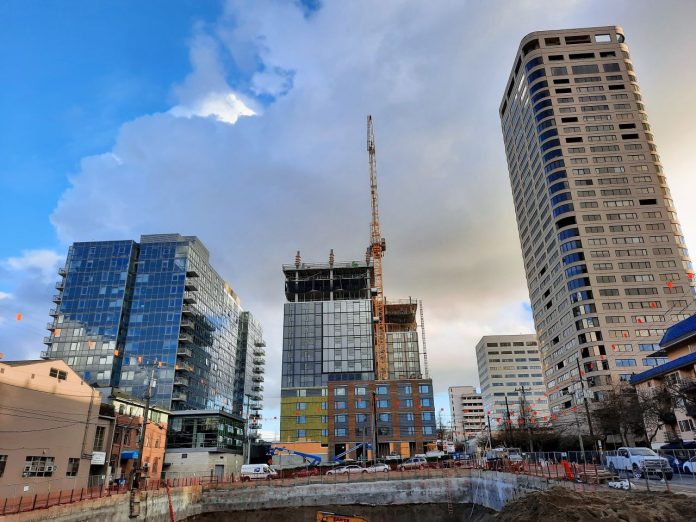
JumpStart funding priorities must be preserved in future years despite Mayor Harrell siphoning $287 million.
While much has been made of the $250 million deficit in Seattle’s budget next year, the city council will be making a more impactful and long-lasting decision by the end of budget season: namely, how JumpStart – or “payroll expense tax” – dollars will be allowed to be spent going forward. Mayor Bruce Harrell is proposing to swipe $287 million in restricted JumpStart revenue in order to plug budget holes and fund his priorities in 2025.
In Budget Chair Dan Strauss’s proposed balancing package, the amount of JumpStart revenue diverted to the General Fund has grown even larger, to a whopping $305 million in 2025.
That’s bad enough for funding JumpStart priorities in the near-term, but Harrell is also seeking to blow up the guardrails discouraging such budgetary raids in the future. Effectively, he would be turning JumpStart into a piggyback for the mayor to play around with every year rather than a restricted fund dedicated primarily to affordable housing.
JumpStart made headlines when it passed in 2020, just in time to save the city from a truly dire fiscal situation caused by the Covid-19 pandemic. However, the plan had always been to focus investments on affordable housing and the Green New Deal after the pandemic fiscal storm had been weathered.
JumpStart revenue comes from a progressive payroll tax that hits Seattle’s largest businesses based on the number of high paid employees they employ. At the time of its passage, proponents pitched JumpStart as part of the solution to both the housing affordability and homelessness crises that have been dogging Seattle. The influx of high earners driven largely by the tech boom has greatly stressed Seattle’s housing market, pushing out long-time residents and making affordable homes hard to come by.
Mayor Ed Murray and King County Executive Dow Constantine called a state of emergency regarding homelessness in the city in 2015, a year in which 124 people died on the streets of King County. In comparison, last year 415 unhoused people died, and the number of unhoused people grew by 23% between 2022 and 2024.
Our affordability crisis isn’t doing any better. A recent report by the Seattle Office of Housing said we’ll need 112,000 new homes by 2044, of which 25% need to be permanent supportive housing — low-income housing with wrap-around services intended for hard-to-serve homeless populations. Meanwhile, another almost 38% need to be affordable housing ranging from 0-80% area median income (AMI).
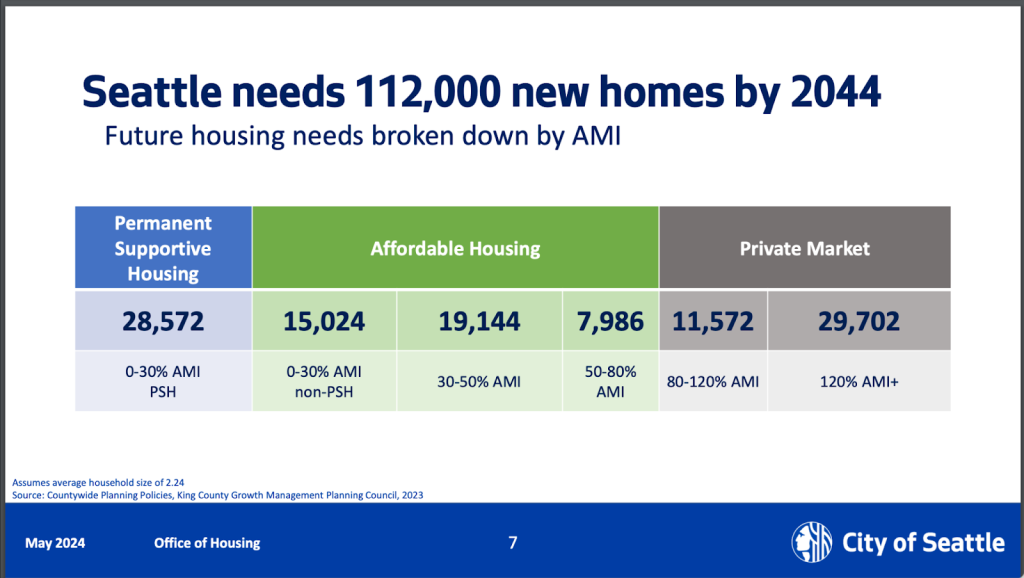
Looking at these numbers, Seattle will need to add 2,100 affordable housing units every year for the next 20 years to meet demand. Unfortunately, The Stranger recently estimated that Harrell’s proposed 2025 budget will only fund 1,068 affordable housing units, which only gets us to about half of our annual target.
JumpStart backers touted the funding source’s potential to help Seattle meet its climate goals as the realities of climate change continue to become more visible, from annual smoke seasons in the Pacific Northwest to more severe storms, heat waves, and flooding across the country, leading to increased deaths and property damage.
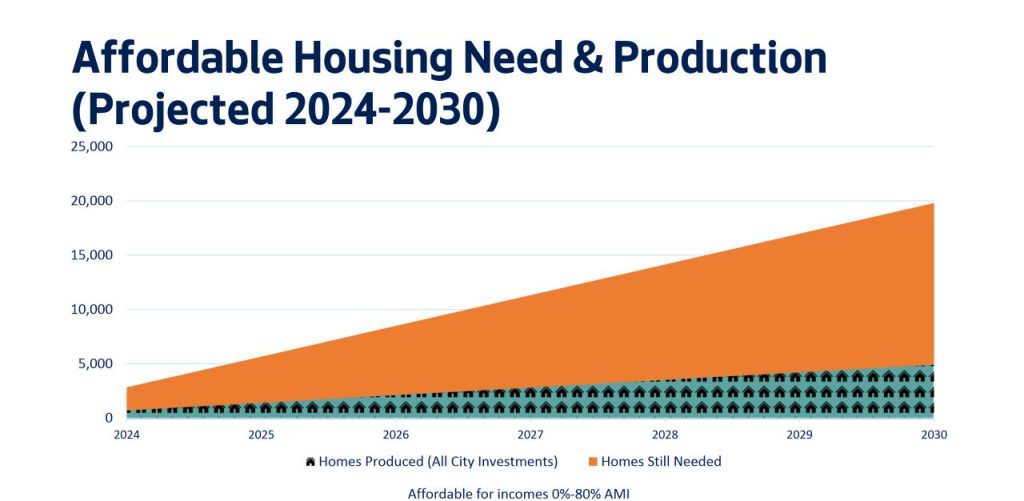
And JumpStart was designated as a permanent funding source for the Equitable Development Initiative, which works to meet the needs of marginalized populations, reduce disparities, and prevent displacement. Given Seattle’s history of redlining and biased policing, JumpStart money represents an opportunity to begin to address a historic underinvestment in Black communities and other communities of color.
While JumpStart was designed to ease the displacement pressure and other negative externalities caused by Seattle’s booming corporate sector, it was not popular with corporate leaders. The Seattle Metropolitan Chamber of Commerce twice mounted legal challenges to block JumpStart, before finally conceding defeat after a failed appeal in 2021.
Forced to accept the reality of JumpStart, the chamber instead turned its attention toward controlling revenues from the tax they had opposed. As the City grappled with a looming budget deficit driven largely by inflation, the chamber lobbied hard to solve the deficit by using existing funds and budget cuts rather than raising new revenue — effectively they had JumpStart in mind. And a centrist wave in the 2023 election gave them a like-minded city council.
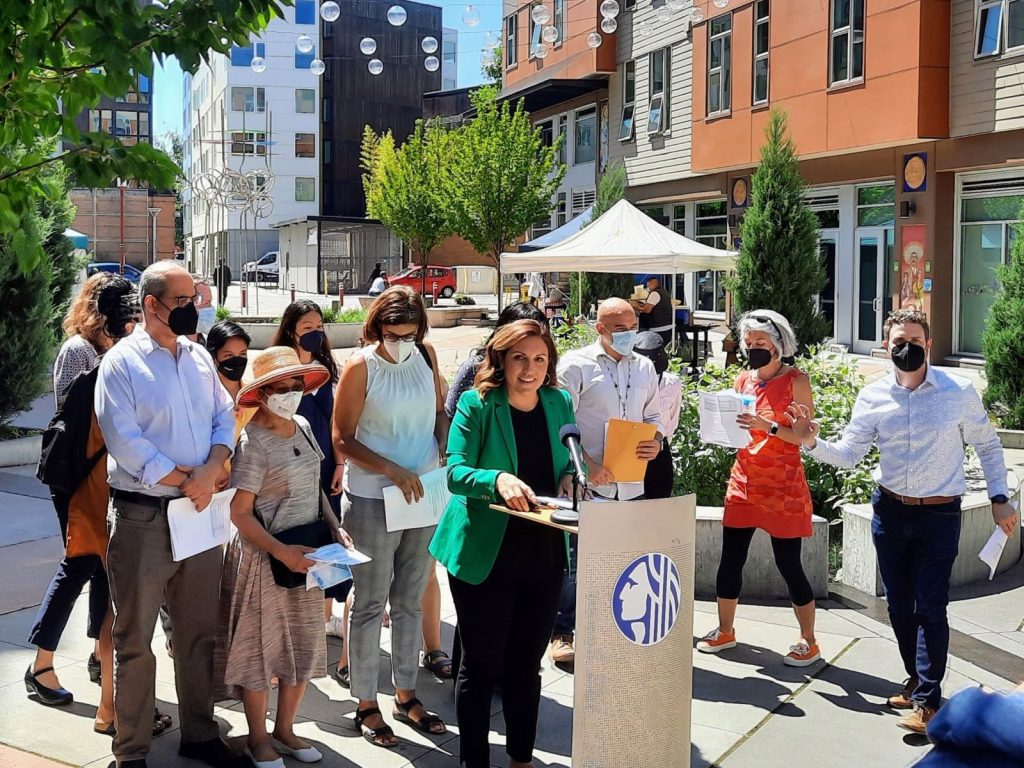
That JumpStart would make a juicy target for future mayors and councils to raid hardly came as a surprise to JumpStart architect Teresa Mosqueda, who was Council’s budget chair at the time, but is now a King County Councilmember. In order to preserve the intent behind JumpStart, the city council passed a spending plan in 2021 memorializing percentages of the tax to be allocated to each of four priorities: 62% for affordable housing, 15% for small business assistance, 9% for Green New Deal investments, and 9% for the Equitable Development Initiative.
Because the JumpStart tax has overperformed every year since its passage, the City has been able to use some of the difference to plug gaps in its General Fund. For 2025, Harrell has proposed to move $287 million, which is the majority of JumpStart funds for the year and more than the year’s total deficit, even while still proposing layoffs and the elimination of positions held empty due to a many months’ long hiring freeze. This is allowing him to spend around $100 million on new priorities, separate from affordable housing, climate change, or equitable development enshrined in the JumpStart spending plan.
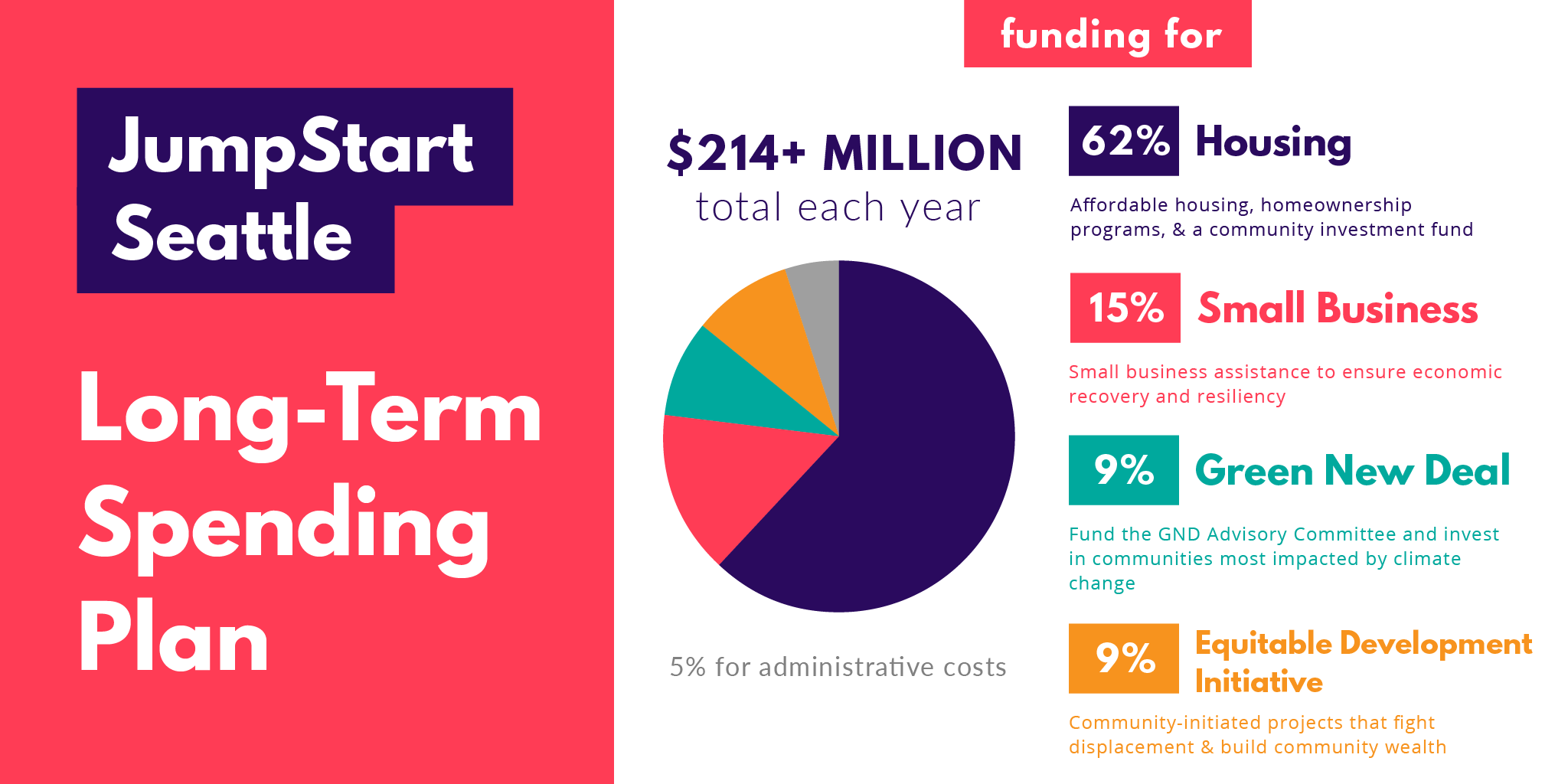
Instead of boosting funding to JumpStart’s priority areas of investment, Strauss increased the raid to $305 million, transferring even more JumpStart funds in the General Fund.
However, this year’s raid is different not only because of the sheer size of the transfer to the General Fund, but because Harrell is proposing legislation to eliminate any spending restrictions for JumpStart funds whatsoever, now and in the future. The percentages of spending in each JumpStart category will no longer be codified into city law.
Unfortunately this permanent legislative change won’t fix Seattle’s budget gap going forward. Even with the change, there is still a projected $78.6 million deficit in 2027 and a $151.2 million deficit in 2028, and as we’ve seen from watching the 2025 deficit steadily grow over the last year, there’s no guarantee that number won’t be higher by the time we get there.
As other City expenses increase due to inflation and increasing labor costs while traditional City revenue sources like property taxes fall, we need to act with real urgency to find other progressive sources of revenue to achieve a more sustainable answer to the continuing deficit problem.
What the new legislation will do is allow us to sweep the history of JumpStart under the rug. Without the percentages of spending in each JumpStart category being codified into law, the City will have an easier time avoiding tough conversations about whether to defund long-term goals like affordable housing in order to fund whatever priorities are front-of-mind for whoever holds office at the moment.
In the 2025 proposed budget, those front-of-mind priorities include expanding the Unified Care Team that performs homeless encampment sweeps, giving the Seattle Police Department (SPD) a 16% budgetary increase in order to pay for huge salary raises and hiring bonuses, surveillance technology the City’s own surveillance working group recommended against, and ever more police overtime, along with more money for two jail contracts and upgrades to Westlake Park.
Whether or not you agree with these new priorities is less important than the question of whether we should push aside the long-term goals for JumpStart dollars that the majority of Seattle residents support in order to fund other things. The housing levy passed last year with over 66% voting in favor, showing the strong support for funding affordable housing.
Elected officials will come and go, each with their own priorities, but the JumpStart spending plan was designed to make sure the City keeps its focus on what it needs to thrive in the long term.
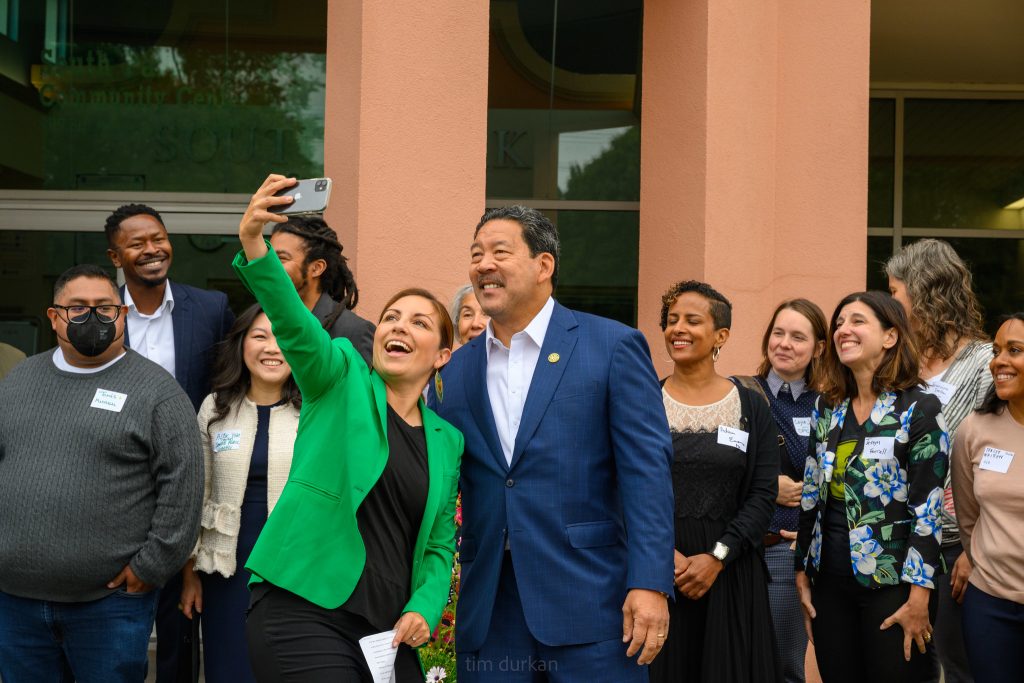
In addition, Harrell’s proposed legislation would do away with the JumpStart Oversight Board before it’s ever been convened. While several members of this board have been appointed, Harrell has delayed making his own appointments for months and would now like to eliminate the board altogether, instead paying $100,000 for a program assessment. Proposed to be conducted through the City Budget Office, Harrell could potentially control the release of any such report, including delaying it or seeking to change its findings, as we saw happen recently with the City’s draft comprehensive plan.
An oversight board, on the other hand, has the power to raise the alert around any undue interference. Such an important progressive revenue source surely deserves the utmost efforts in maintaining accountability and transparency, a purpose for which an independent oversight board would be ideally suited.
The City Council has the final decision on how to tailor this new JumpStart legislation, whether to maintain spending minimums in the various categories such as affordable housing, and whether to proceed with an oversight board to provide much needed transparency. Strauss’s version of the legislation is slated to be presented on November 13, with any amendments due on November 15.
There will be a public hearing regarding the budget, both virtual and at City Hall, on Tuesday, November 12 starting at 5pm. Please consider letting City Council know that you would like JumpStart spending priorities to continue to be explicitly codified, that you’d like the oversight board to begin meeting to increase transparency, and that you support the City finding new sources of progressive revenue to more permanently address budget deficits going forward.
Amy Sundberg is the publisher of Notes from the Emerald City, a weekly newsletter on Seattle politics and policy with a particular focus on public safety, police accountability, and the criminal legal system. She also writes science fiction, fantasy, and horror novels. She is particularly fond of Seattle’s parks, where she can often be found walking her little dog.

